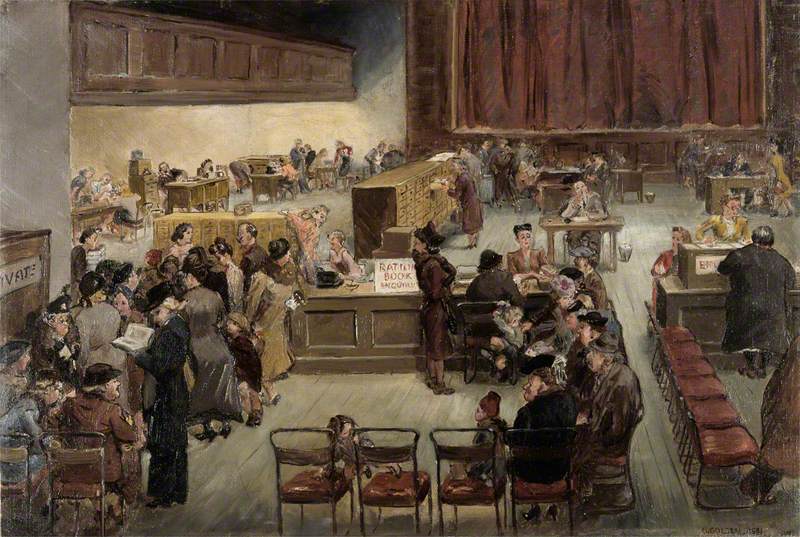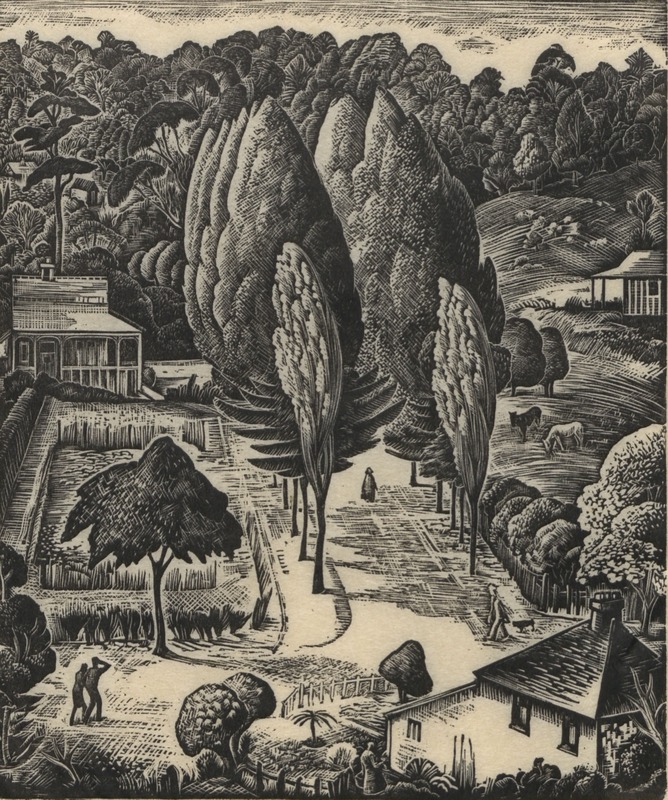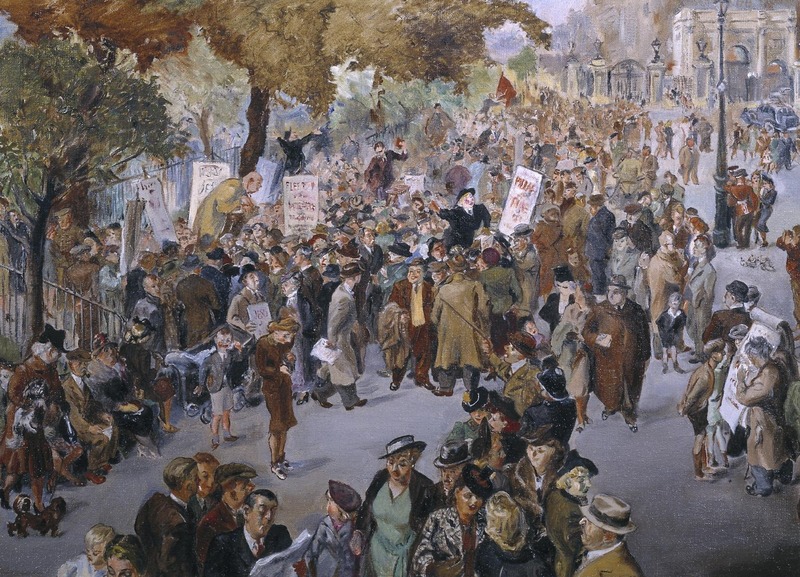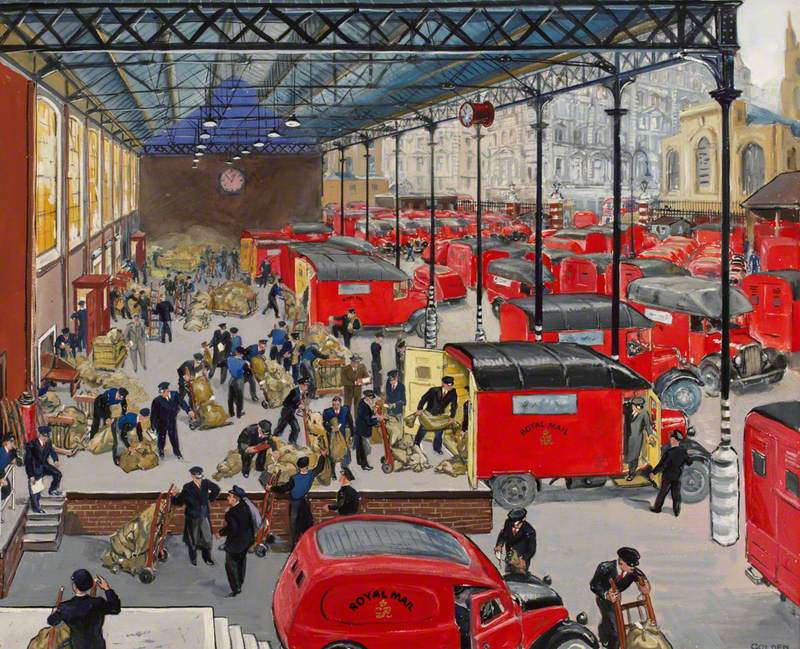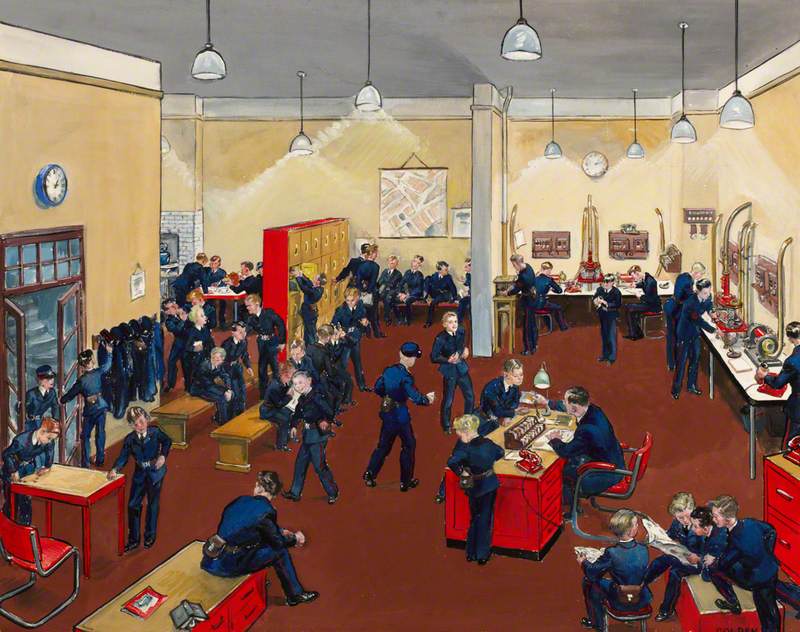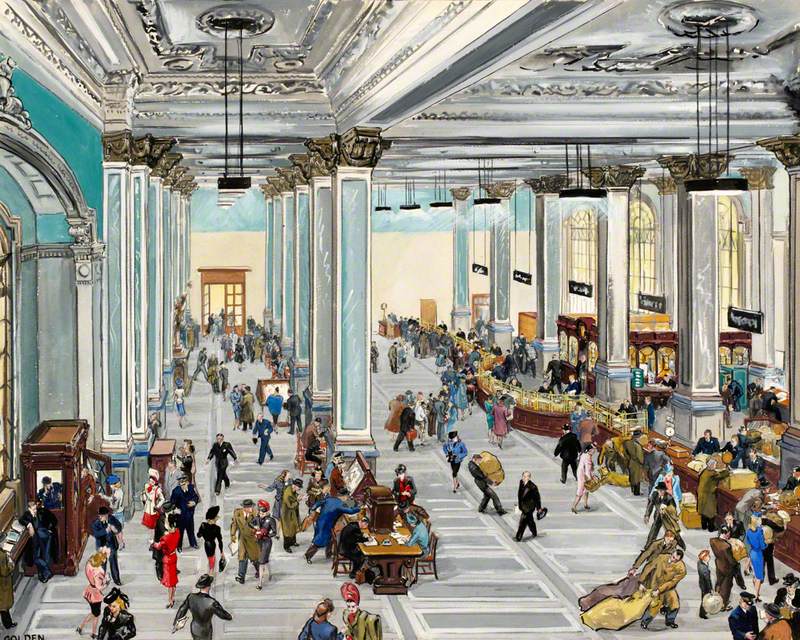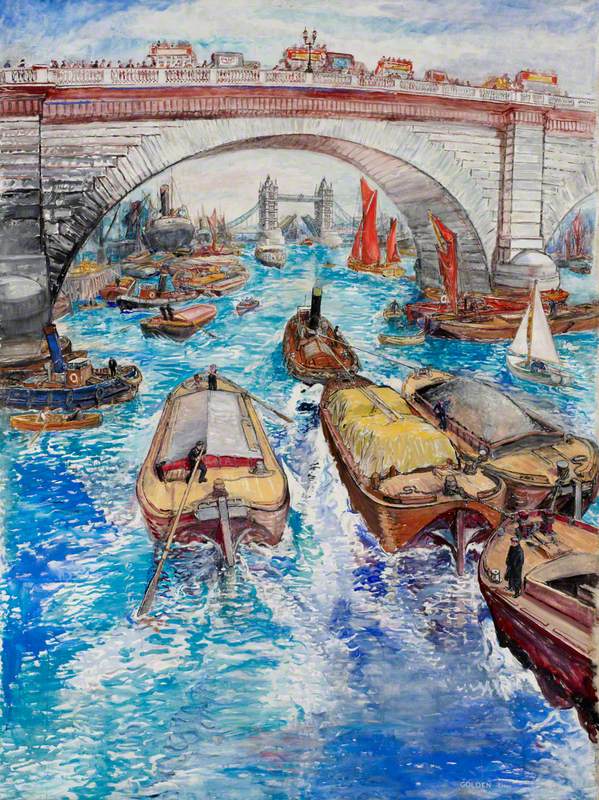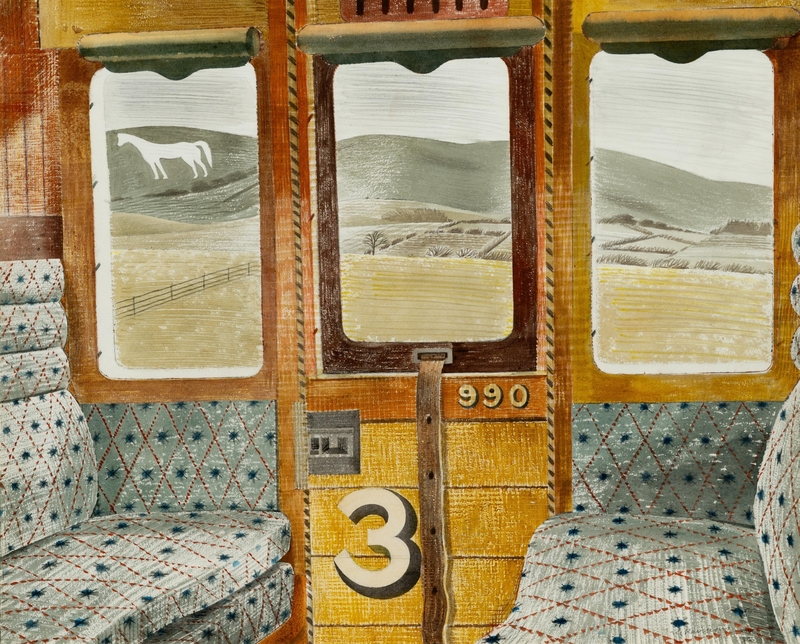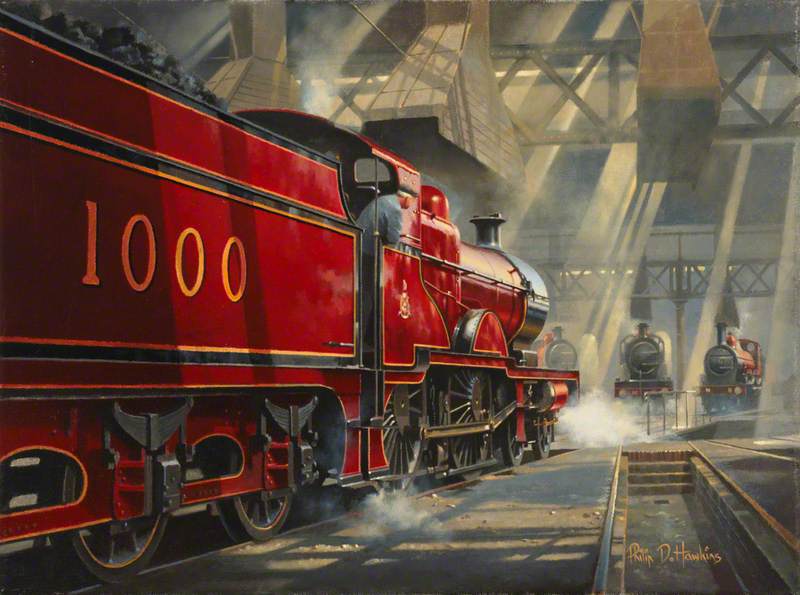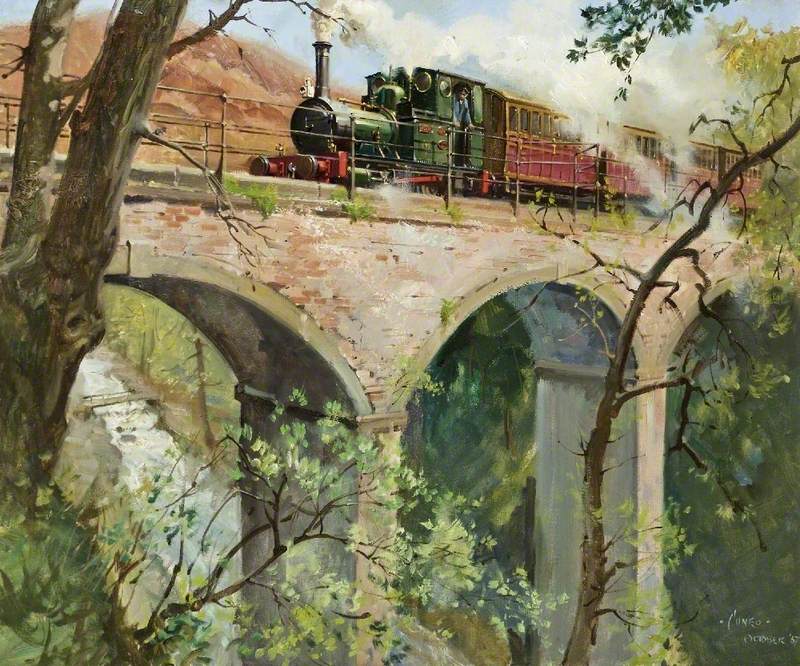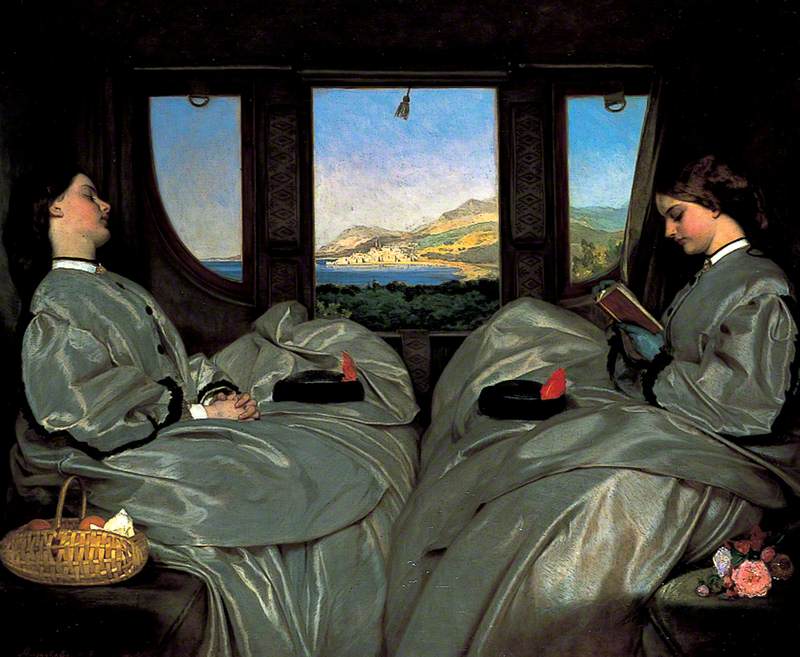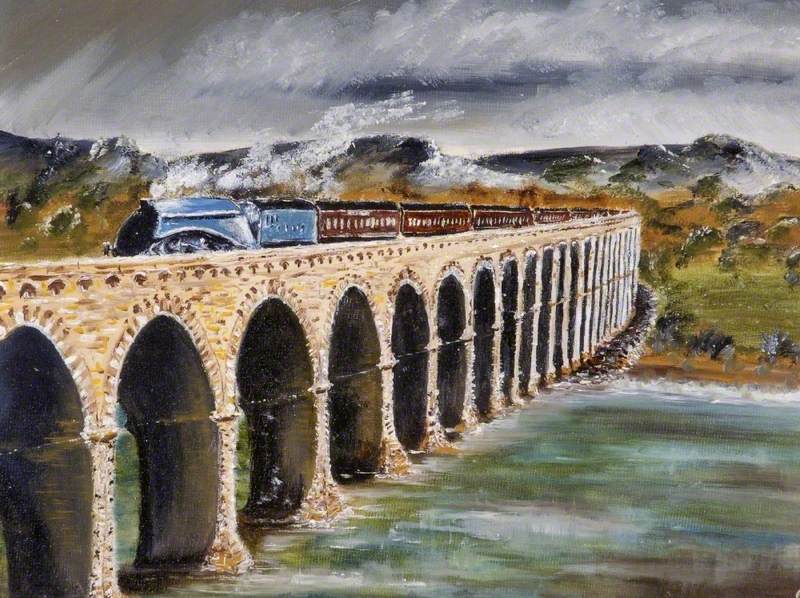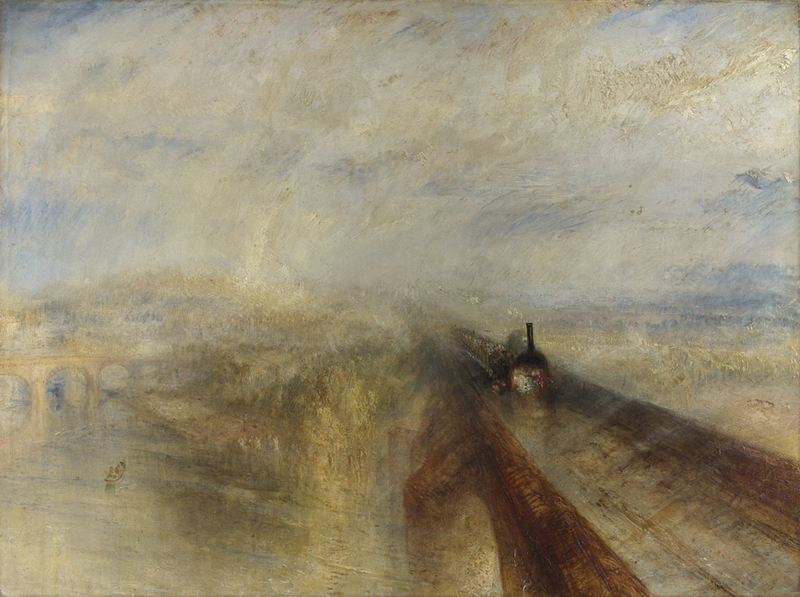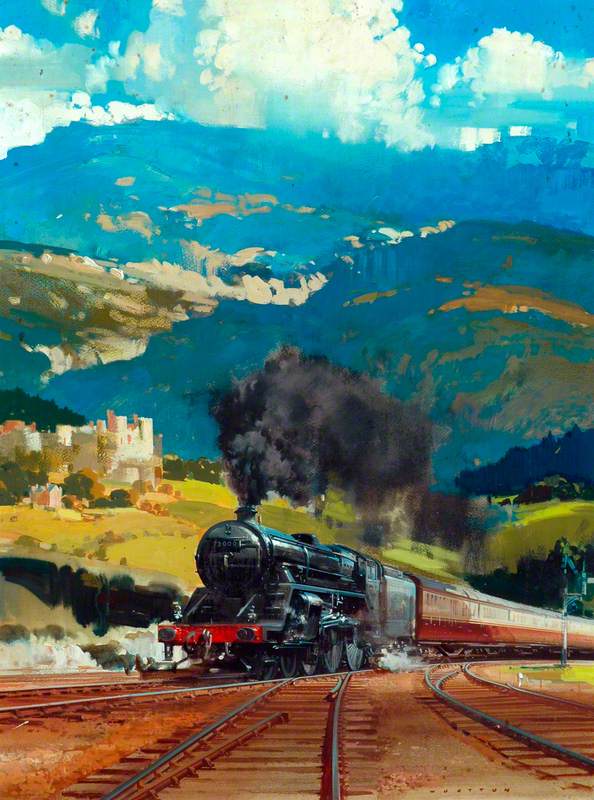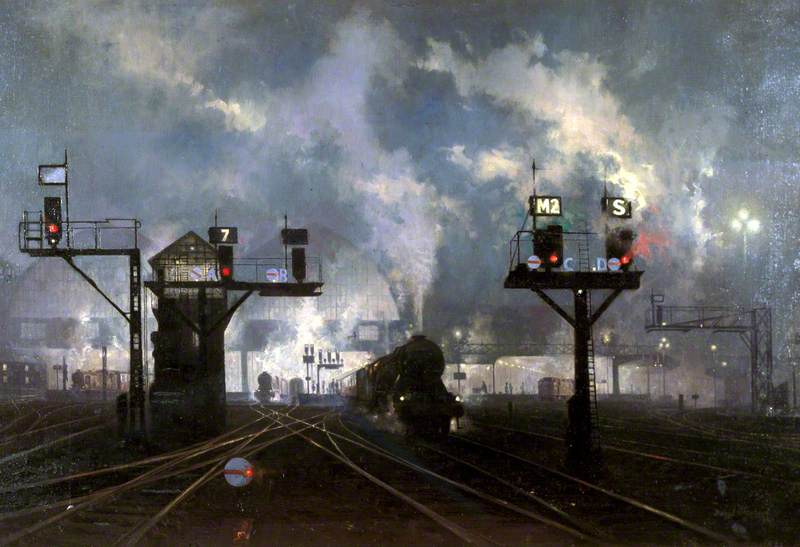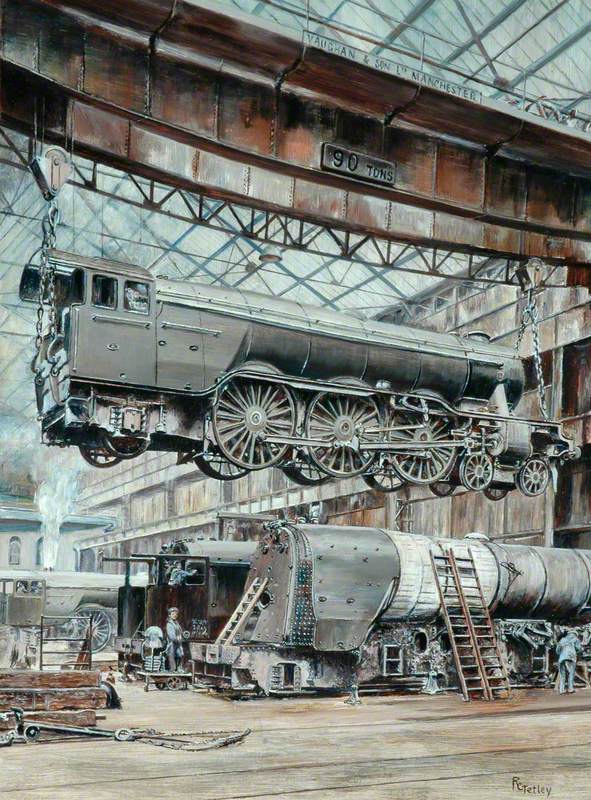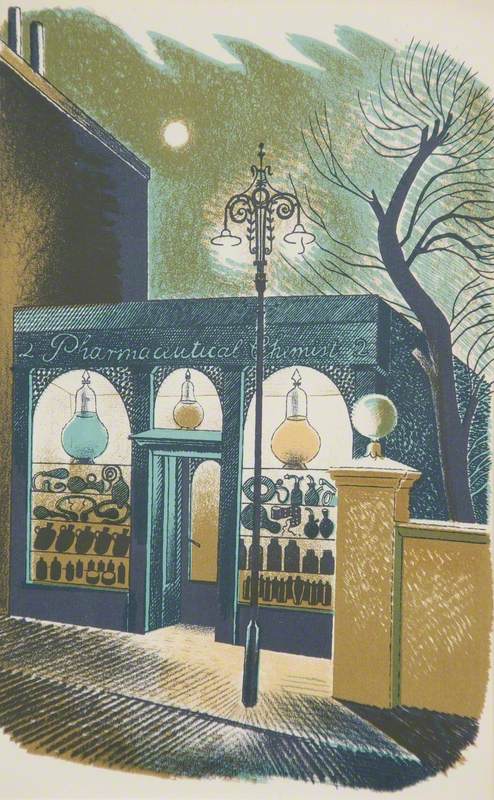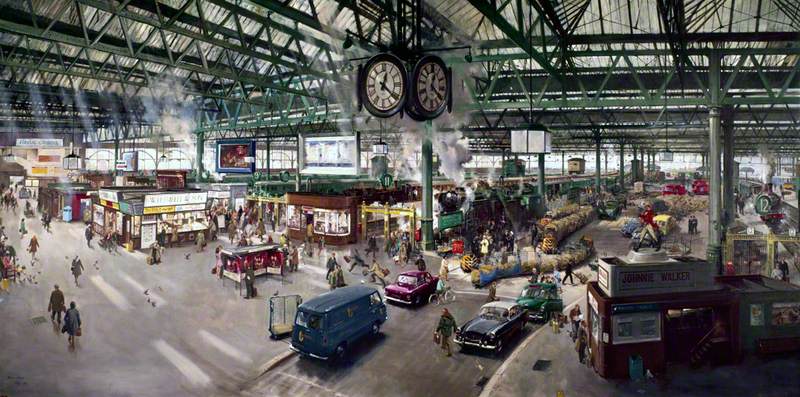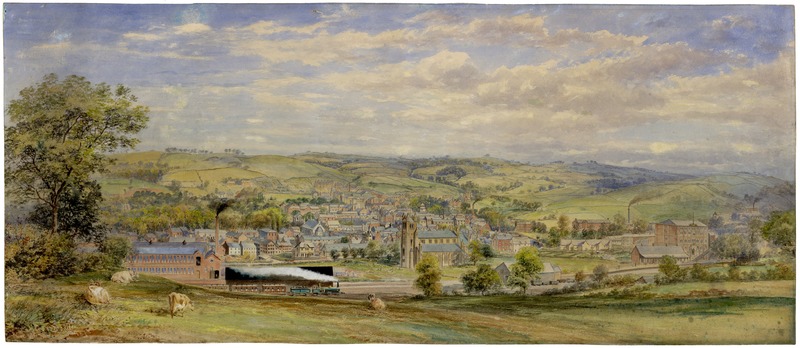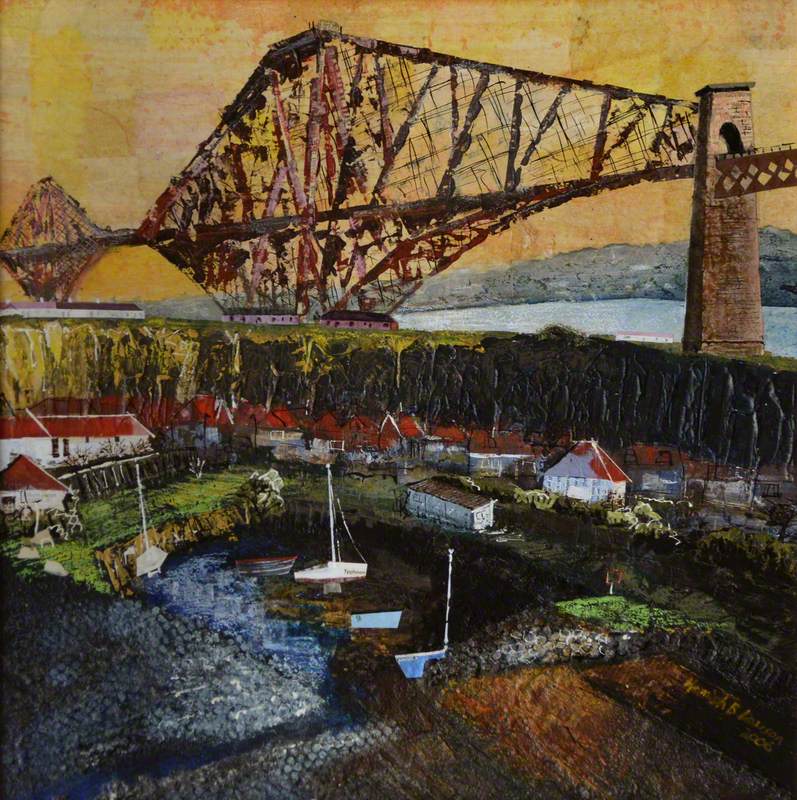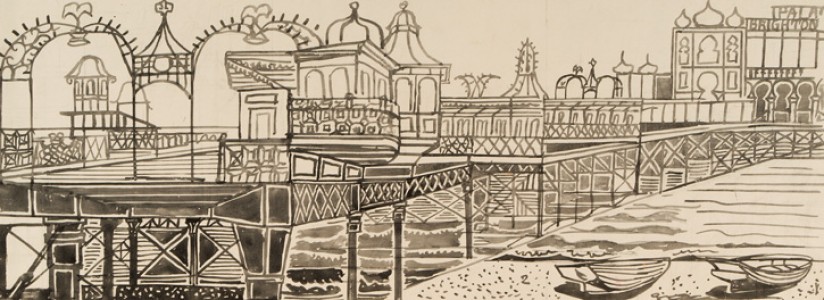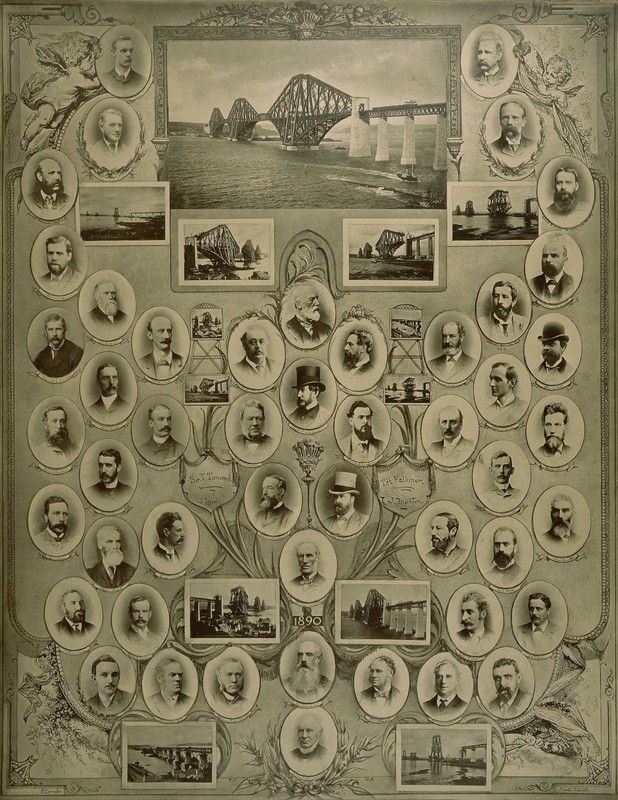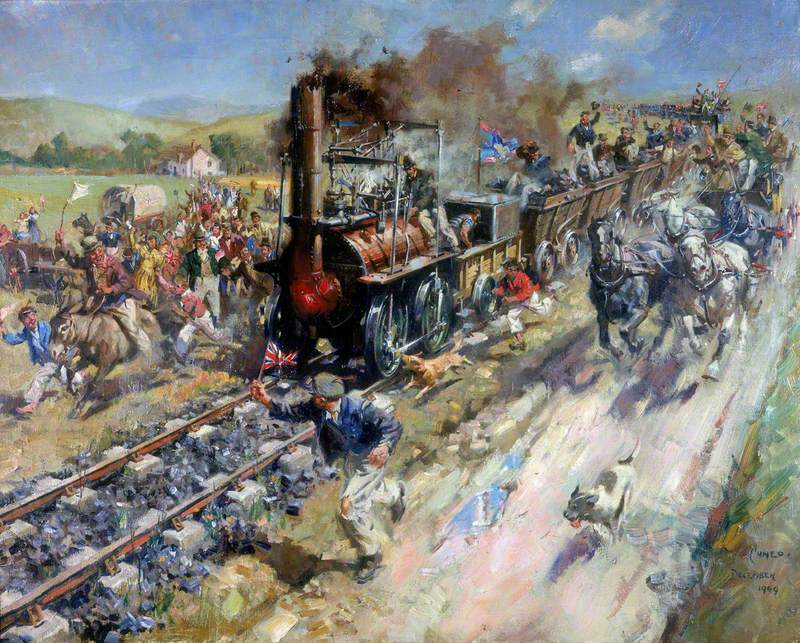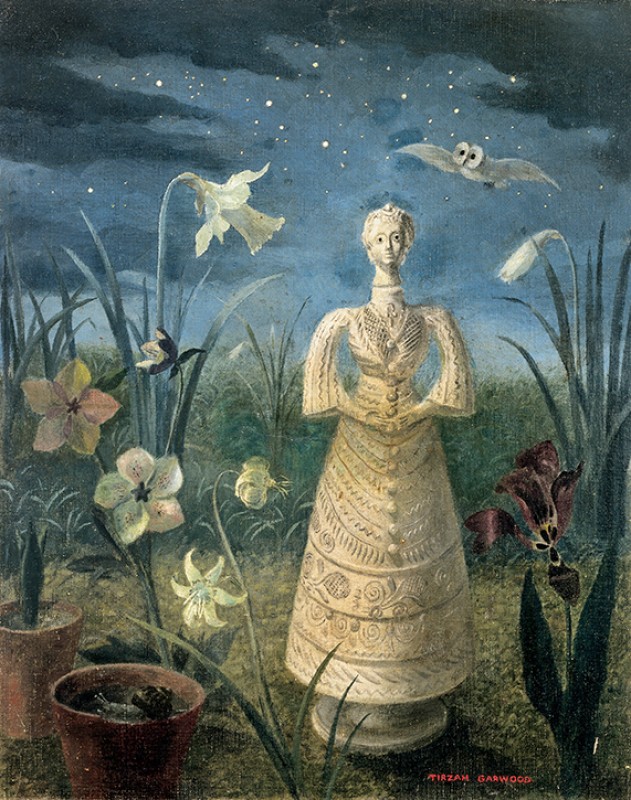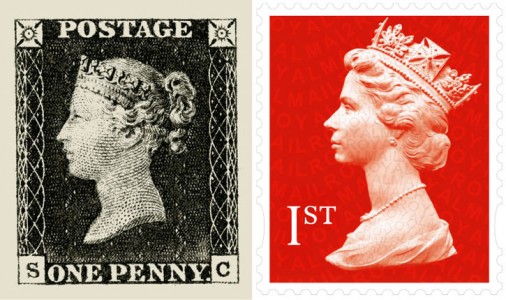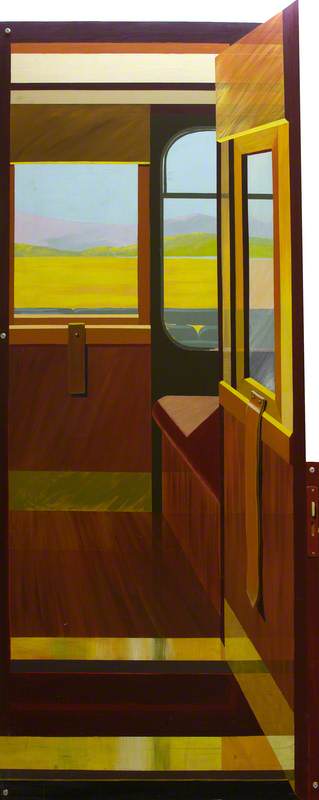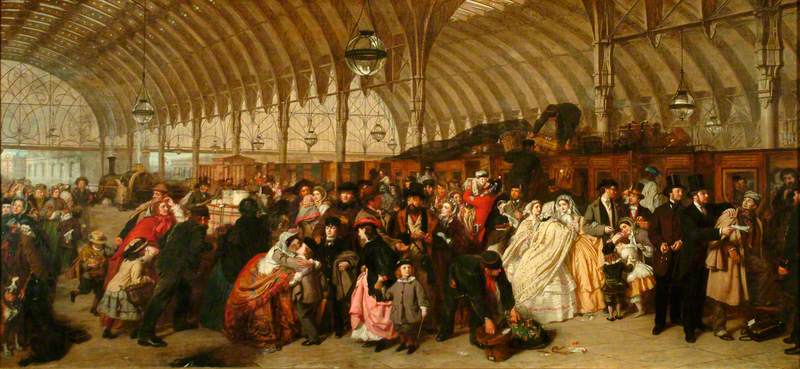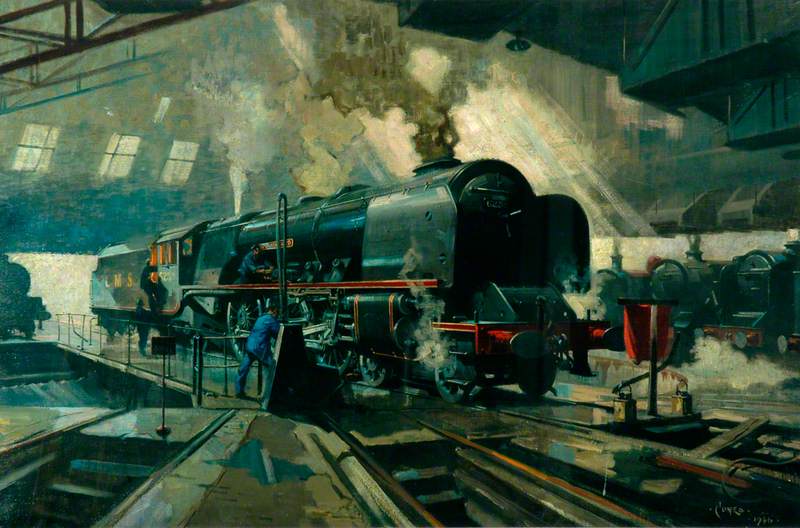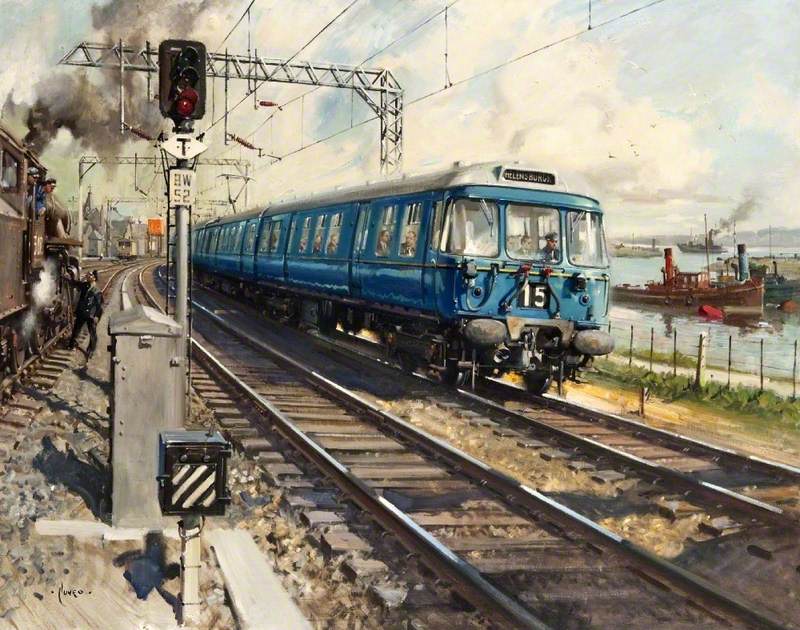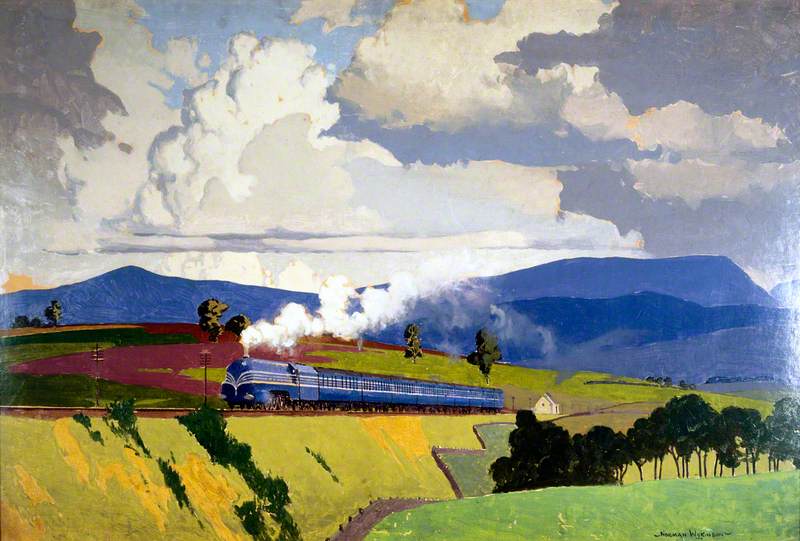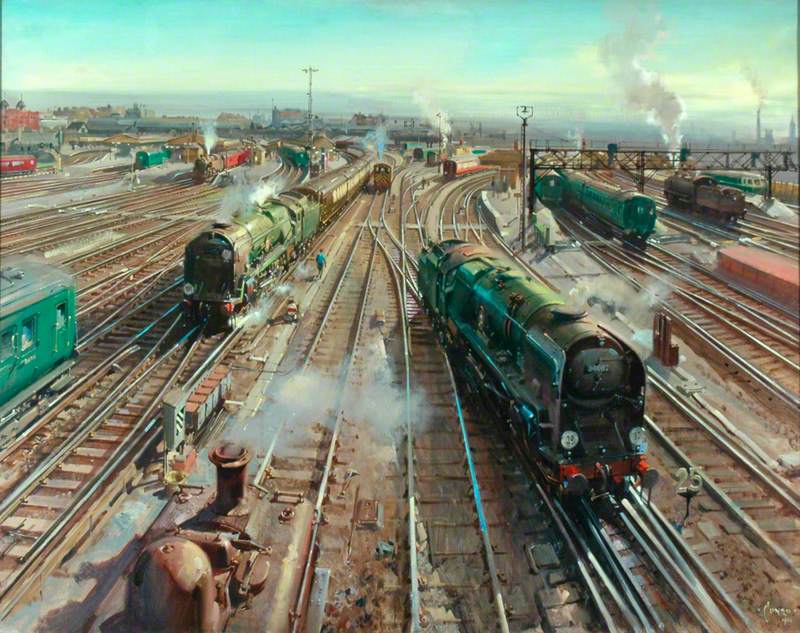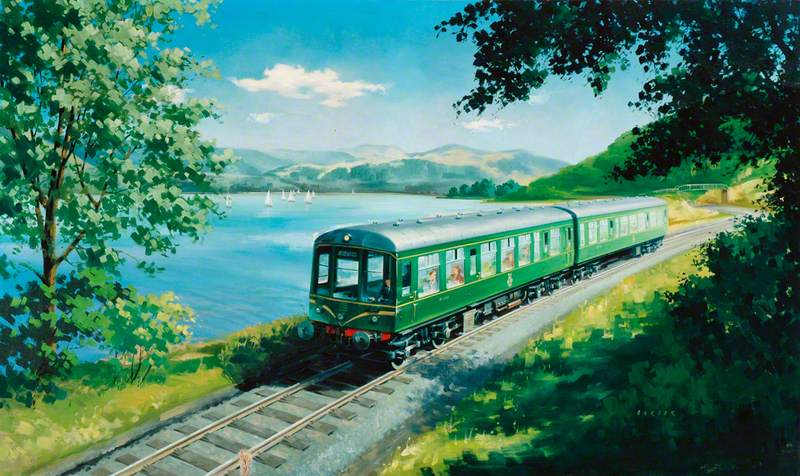This artwork is one of the top 20 UK railway artworks voted for by the public as part of Railway 200.
Born in 1904 within the sound of Bow Bells (a true Cockney), Grace Golden lived and worked in London her whole life. Growing up on the edge of the River Thames, she became fascinated by the busy comings and goings of the river folk. That enchantment with city life never left her.
An intelligent, precocious child, she attended the City of London School for Girls, won a scholarship to Chelsea College of Art and then went on to the Royal College of Art. From seemingly humble East End beginnings, Golden went on to produce an impressive body of work.
Growing up within a working-class community, she understood that it was people plus architecture that makes a great city. Her incredible attention to detail in drawings, prints, sketches and paintings has left us with a comprehensive collection of historically accurate depictions of post-war London life.
At the Royal College of Art, Golden concentrated on wood engraving and illustration, and she immediately began illustrating books, including the children's stories of Enid Blyton. She was employed by the Ministry of Information and the Pilgrims Trust. This commercial work was her bread and butter, but she longed to work in watercolours and oils. After being left a small legacy in 1934, she finally had the means to stretch her talent and she began painting exhibition pieces. These were well received, and Golden exhibited at the Royal Academy and the Fine Art Society.
In 1948, Golden produced a series of posters illustrating the work of Post Office workers at four locations across London. Thousands of posters, each measuring 20 by 25 inches, were produced for display in telephone exchanges, workrooms and staff dining rooms. Euston Station: Loading the Travelling Post Office was one of these posters.
Euston Station: Loading the Travelling Post Office
1948
Grace Lydia Golden (1904–1993) 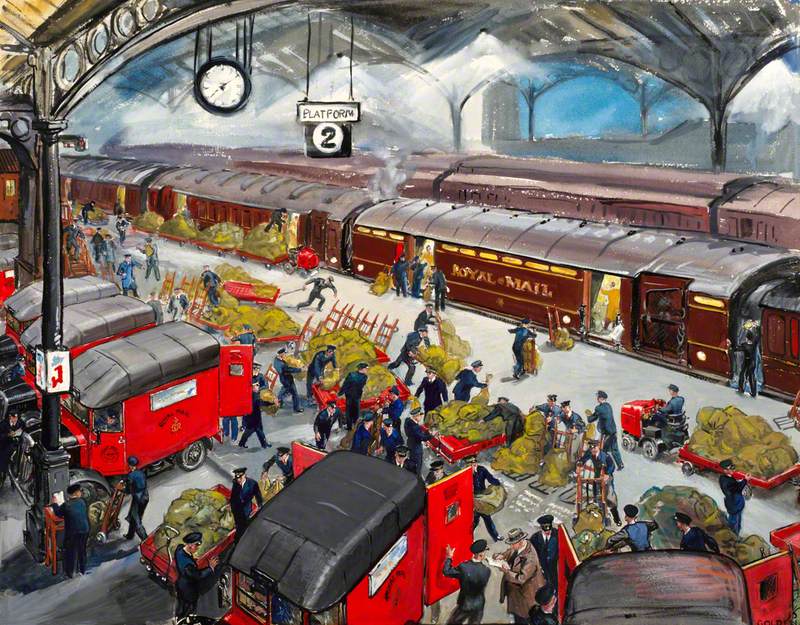
The Travelling Post Offices (TPO) were specially adapted railway carriages. Post Office workers sorted the mail into pigeonholes whilst travelling at speed across the UK. Golden shows us hundreds of huge mail sacks being pulled out of bright red Post Office vans and hauled to the carriages – by hand, on sack trucks and in trailers. How many uniformed workers can you see? Dozens at least. The sense of urgency is palpable.
In the travelling post office image, Golden has captured the intense activity of Euston station, London's first major mainline railway station. Opened in 1837, it was designed by Robert Stephenson. The soaring Doric arches that fill the top of the picture were designed by Philip Hardwick. Smoke billows from the train engines, and we can almost hear the hiss and sputter of these giant steam locomotives. At this exact point in time, 1948, the British Railways system was nationalised. And although steam was dominant, the move to diesel and electric traction was on the horizon.

Life in Britain Today – A Typical British Railway Terminus
Poster artwork by Grace Lydia Golden (1904–1993)
Image: IWM (Art.IWM PST 16299)
The railways, of course, were a marvellous representation of the modern, industrialised world, moving people, parcels and post across the UK and across the world. Changes in technology meant changes in the architecture of the city as well as changes in the activities and employment of its citizens. Golden encapsulates it all in her images.
London gave Golden everything she needed. The vivid life of a bustling city enthralled her. Her keen interest in social history means that Golden's work is quite unusual. The architectural and geographical detail of her work is beyond compare.
But layered onto that, we see the population of London – the everyday life of the residents of the capital city. Their character, their activities, their employment. This makes her work of great historical value. You might say that what we have in Golden is a war-era Where's Wally? Her exquisitely detailed images are packed with people and stories.
Later, Golden continued to work on book illustrations as well as the weekly children's magazine Swift and its annuals. Even as she aged, she remained captivated by the city of her childhood. In 1951, Golden produced a book called Old Bankside, containing 51 illustrations of the area around Blackfriars Bridge and London Bridge. At this point, Bankside was not the area we know today. The Tate Modern building was still a power station, surrounded by warehouses, in a grimy, run-down neighbourhood.
Such was the accuracy and attention to detail of the Bankside book that the US actor and director Sam Wanamaker invited Golden to be the honorary archivist of his Shakespeare Globe Theatre rebuilding project. No one knew the true architectural and social history of the inner city like Golden.
Golden made a living from her art at a time when that was unusual for a female artist. Yet despite this success, she always felt that her commercial art came second to her love of fine art watercolour and oil painting. Although she retained her love of art, theatre, ballet and music, Golden's last years were spent in reclusive contemplation. Like so many who had grown up during the war years, she was frugal and thrifty, still making her own clothes. She died in 1993.
Literally hundreds of the quick pencil sketches Golden made are now held at the Museum of London. Other works, in acrylic, watercolour and oils, can be found at Tate, the Imperial War Museum and in the National Archives – an astonishing legacy from this exceptional working-class artist.
Candy Bedworth, writer
This content was funded by Railway 200
About Railway 200
Railway 200 is a cross-industry, UK Government-backed, partner-led celebration of the 200th anniversary of the birth of the modern railway, commemorating the opening by George Stephenson of the Stockton and Darlington Railway in the North East of England in 1825, a journey that changed the world forever. It explores the past, present and future of rail, and how it has shaped our lives and livelihoods. Numerous activities and events are planned throughout 2025, many of which are listed at www.railway200.co.uk
